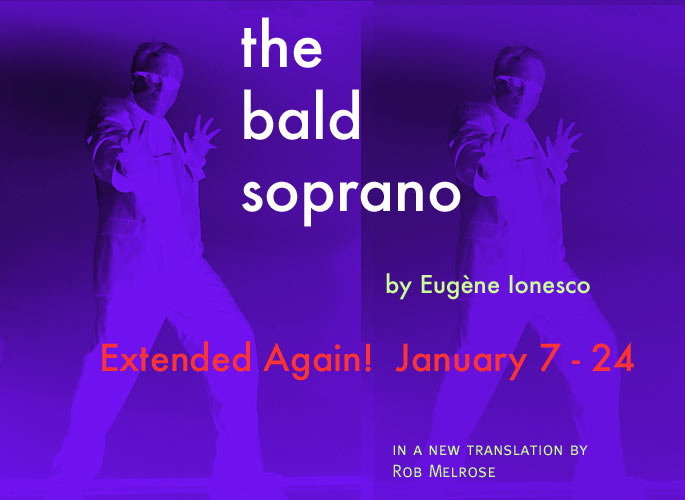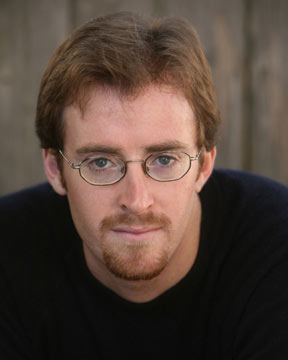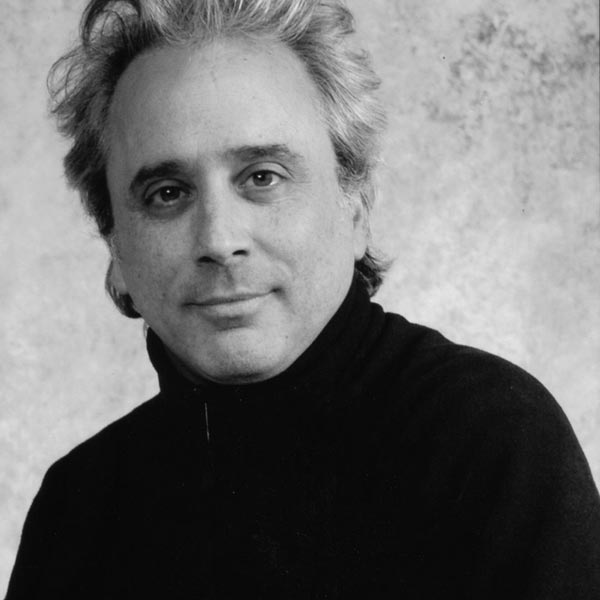
The Bald Soprano
October 23 - January 24, 2009
by Eugène Ionesco
In a new translation by
Rob Melrose
directed by Rob Melrose
This is the play that breaks all the rules!
Mr. and Mrs. Smith have invited Mr. and Mrs. Martin over for dinner as chaos cheerfully reigns over logic and conventional manners. Known all over the world as one of the quintessential absurdist masterpieces, this hilarious play is the perfect follow-up to last season’s hit production of Ionesco’s Victims of Duty, which garnered a Bay Area Critics Circle Award for Best Production.
65 minutes with no intermission
It’s glorious and weird, and you absolutely shouldn’t miss it.
-Chris Jensen, San Francisco Weekly
The Cutting Ball ensemble functions like a well-oiled machine… Within Melrose’s tight orchestration, each actor finds whole volumes of delicious nuances.
-Jean Schiffman, San Francisco Examiner
It's a lively production of a compact gem that could just as easily be impenetrable in less capable hands... Translator/director Melrose's crisp 65-minute staging brings out (the) humor beautifully and makes even the more abstruse patches entertaining.
-Sam Hurwitt, Marin Independent Journal
Cast and director ground the play's giddy, unhinged quality in bright, highly articulate, physically taut comedic performances.
-Rob Avila, San Francisco Bay Guardian
It’s glorious and weird, and you absolutely shouldn’t miss it.
-Chris Jensen, San Francisco Weekly
The Cutting Ball ensemble functions like a well-oiled machine… Within Melrose’s tight orchestration, each actor finds whole volumes of delicious nuances.
-Jean Schiffman, Examiner
It's a lively production of a compact gem that could just as easily be impenetrable in less capable hands.
-Sam Hurwitt, Marin IJ
Acting is excellent throughout, as can be expected of Cutting Ball productions.
Eryka M. Fraczek - Bay Times
Fast, fun, and fluid... the cast is uniformly outstanding.
-Patrick Vaz
The Bald Soprano moves beyond absurd theatre to absurdly funny entertainment.
-George Heymont, myculturallandscape.blogspot.com
This production rocked, from the translation to the hilarious and precise movement of each of the killer actors.
-Tim Bauer
It’s wonderful that Rob Melrose and The Cutting Theater takes these risks to bring us such challenging, eclectic material.
Clinton Stark

Derek Fischer (The Fire Captain) has numerous North Bay credits, including most recently The Three Musketeers at the Sebastopol Shakespeare Festival and Welcome Home Jenny Sutter with Sonoma County Repertory. He recently moved down from Ashland, Oregon where he studied theatre at Southern Oregon University and was seen in Of Mice and Men, The White Plague, Who’s Happy Now, and many others.

Donell Hill (Mr. Martin) was last seen in Stanford Summer Theater's Electra Festival as Aegisthus in Sophocles' Electra, Orestes in Aeschylus' Libation Bearers, and Pylades in Euripides' Electra. He made his professional theater debut at Berkeley Repertory Theatre in Amy Freed's You, Nero. Donell holds a B.A. in Drama from Stanford University and looks forward to becoming part of the Bay Area theater community.

Caitlyn Louchard (Mrs. Martin) recently received her BFA from NYU's Tisch School of the Arts. Bay Area acting credits include Catherine in A View From the Bridge with Actor's Theatre of San Francisco, Isabella in Measure for Measure with Shady Shakespeare, and most recently, Emily Dickinson in Tell It Slant with the Pear Avenue Theatre/Bootstrap Foundation. She has understudied at Berkeley Rep, TheatreWorks and SF Shakes. In April, Caitlyn will appear again in Tell it Slant, which will be remounted at the Southside Theater at Fort Mason.

Paige Rogers (Mrs. Smith) is the Associate Artistic Director and co-founder of The Cutting Ball Theater where she has appeared in My Head Was a Sledgehammer, As You Like It, The Vomit Talk of Ghosts, Macbeth, The Taming of the Shrew and Bone to Pick. She has worked locally with Berkeley Opera, Lamplighters, Sonoma Rep and on tour with Cal Shakes. Nationally, she has been seen at The Kennedy Center, McCarter Theatre, Trinity Rep and the Oregon Shakespeare Festival. Last year she made her professional directorial debut at Cutting Ball with the highly acclaimed Mud.

David Sinaiko (Mr. Smith) has appeared in Cutting Ball's productions of Krapp's Last Tape, Endgame, TheTaming of the Shrew, As You Like It, The Sandalwood Box, Ajax for Instance, Macbeth, 365 Plays/365 Days, Woyzeck and Victims of Duty. He was a founding member of Chicago's New Crime Productions where credits include Heart of a Dog, The Balcony, Fear & Loathing in Las Vegas, Accidental Death of an Anarchist, Methusalem and Alagazam! In Chicago he also worked at The Actor's Gang and the Goodman Theatre. Recent credits include the annual SantaLand Diaries by David Sedaris, Golden Thread's Jihad Jones & the Kalashnikov Babes, Crowded Fire's Wreckage and SF Playhouse's One Flew Over the Cuckoo's Nest.

Anjali Vashi (Mary, the maid) has directed several US and World Premieres off-off Broadway, most recently the world premiere of Chuck Mee's Coney Island Avenue. She has just completed a season-long apprenticeship at Magic Theatre for Artistic Direction in new play development. She served on the full-time faculty in Pace University's BFA Acting Program in NYC and now serves on the faculties of University of San Francisco and San Francisco State University, teaching Directing and Viewpoints training. She received her MFA in acting from Columbia University's Graduate School of the Arts.
Notes from the Dramaturg
The Bald Soprano Dramaturg Nakissa Etemad explores Absurdism and delves into the life and work of Eugène Ionesco.
Nakissa Etemad is a San Francisco-based dramaturg, producer, and translator and the newly appointed Resident Dramaturg of The Cutting Ball Theater. She served as dramaturg for last season’s award-winning production of Victims of Duty, and is the former Dramaturg & Literary Manager for The Wilma Theater, San Jose Rep, and San Diego Rep.
Absurdity in Numbers By Dramaturg Nakissa Etemad
Dozens of chairs clutter the room for an audience that never arrives… pleasantries among new acquaintances erupt into a cacophony of nonsensical words and phrases… the decades-old corpse in the bedroom invades the living room as it grows weed-like to gigantic proportions… an everyman-hero fights to retain his humanity while his fellow citizens mutate into wild beasts…
There is nothing quite like an absurdist play. Anything is possible. What appears as humdrum everyday life soon transforms into the ridiculous and unimaginable. Theatre of the Absurd, a close relative of the Surrealist movement launched by Alfred Jarry (Ubu Roi, 1896), explores the comic in the mundane, the preposterous in the rational, the strange in the straightforward, the dreams in those who are wide-awake.
In the aftermath of the German occupation of Paris, the City of Lights of the mid-1940s & ‘50s sought to rebuild itself and reclaim a cultural and personal identity for its people. The French Resistance—which included many writers—returned from the underground with less purpose now that the fight had ended, and artists were once again free to examine their experiences, restore their pride and prestige, and unabashedly explore the meaning of life. Eugène Ionesco and his contemporaries, including Irish expatriate Samuel Beckett (Waiting for Godot, 1953) and Parisian Jean Genet (Les Bonnes, 1947; The Maids), found themselves responding to the existentialist philosophies of fellow writers Jean-Paul Sartre (Huis Clos, 1944; No Exit) and Albert Camus (Caligula, 1945). Camus coined the term that would soon identify this group of the Paris avant-garde who would each in their own way redefine the dramatic art form; in his essay “The Myth of Sisyphus” (1942), Camus states that the human situation is essentially absurd, devoid of purpose.
To this post-war generation of writers, rational and meaningful choices seemed impossible, and fate seemed uncontrollable, so they carved their own vision of what it is to exist. Thus to the absurdists, in a world without purpose, it is easier to exist if one accepts the lack of meaning, the difficulty of valid communication, and that truth is found in chaos and lack of order, of logic, of certainty. As Ionesco said in his Notes et Contre-Notes, or Notes and Counter-Notes (pub.1962), “truth lies in our dreams, in our imagination.” The very structure of absurdist plays embody this vision with non-linear plotlines, events triggered by patterns rather than by cause-and-effect, archetypal characters instead of naturalistic persons, devalued language full of repetition, clichés, non sequiturs (illogical statements) and puns, forward movement of time replaced by a timeless, circular quality…. Ionesco, especially, seems to reject traditional drama to replace it with his own form of comedy-anarchy to convey oneiric worlds (of dreams) without clear meaning, governed by uncertainty and chance rather than logic, where farce covers up a surface of metaphysical distress (distress from a reality beyond what is perceptible to the senses)…. In short, a place where chairs can multiply for no reason, men can turn into rhinoceroses without explanation, and a man can literally, physically dig through the memories in his mind….
©2009 Nakissa C. Etemad
The Creator of the Anti-play By Dramaturg Nakissa Etemad
I personally would like to bring a tortoise on to the stage, turn it into a race horse, then into a hat, a song, a dragoon, and a fountain of water. One can dare anything in the theatre, and it is the place where one dares the least. I want no other limits than the technical limits of stage machinery. People will say that my plays are music-hall turns or circus acts. So much the better – let’s include the circus in the theatre! Let the playwright be accused of being arbitrary. Yes, the theatre is the place where one can be arbitrary. As a matter of fact, it is not arbitrary. The imagination is not arbitrary, it is revealing. …I have decided not to recognize any laws except those of my imagination, and since the imagination obeys its own laws, this is further proof that in the last resort it is not arbitrary.
— “Eugène Ionesco ouvre le feu” (with parallel English translation),
World Theatre, Paris, vol. VIII, no. 3, Autumn 1959
The Man Behind the Curtain
Born in Romania in 1909, young Ionesco was son of a French mother, Thérèse Ipcar, and a Romanian father, named Eugen Ionescu (Romanian spelling), who moved his wife and two-year-old son from Romania to Paris for his pursuit of a Doctorate of Law. Shortly after, Ionesco’s sister Marilina was born. Four years later, their father returned to Bucharest to fight in World War I, while the family remained in Paris. They lost contact with the father and believed him to be killed in action, when in fact, back in Romania, he had claimed his wife’s desertion of their home and divorced her in absentia, remarrying in 1917 without informing his family. In 1918, the 8-year-old Ionesco and his sister lived with their mother, whom he adored, in a modest hotel on rue Blomet in the 15th district of Paris. For fear of bombing raids (or due to a developing anemia in Ionesco, according to Martin Esslin, author of The Theatre of the Absurd), Thérèse had the children moved for some months to the countryside of Northwestern France, which Ionesco would later claim to be among the happiest times in his childhood. In 1922, father Eugen demanded that his children be sent to him and his new wife, and the reluctant 13-year-old Ionesco left his mother for Bucharest. Thérèse would later follow and take in his sister, who was driven out by his stepmother. Ionesco learned Romanian to enter lycée (high school).
Ionesco did not get along with his father or his stepmother, always having harbored a deep resentment towards his father for his deception and cowardliness. He eventually moved out of his father’s home in 1926. Even from a young age, Ionesco disapproved of his father’s falseness in siding with whatever regime was in power, especially with the rising fascist regime in Romania. Around this time, Ionesco discovered the work of fellow Romanian Tristan Tzara, the father of Dadaism, a nihilistic literary and artistic movement rejecting convention and exploring life & art through irrationality, the bizarre, disintegration of language; etc. Ionesco was studying French Literature at the University of Bucharest and began his career as a budding literary critic and poet. He wrote avant-garde essays and poems for literary reviews, most notably a collection of controversial essays attacking the best of Romanian literati, entitled Nu (1934; No). Two years later, he married Rodica Burileanu, and soon after, lost his mother to a stroke. While teaching French at the lycée in Bucharest, he received a State grant to write his doctorate on “Sin and Death in French Poetry” in Paris, beginning in 1939. During World War II, in 1942, they moved to Marseilles as poor refugees, spending those years of the German occupation in hiding. Two years later, their only daughter Marie-France was born, on the very day of France’s liberation. Now that France was free from the occupation, Ionesco, his wife, and daughter moved permanently to Paris in 1945. His father Eugen died in 1948. That same year, Ionesco became a French citizen and wrote his first play, the first version of The Bald Soprano (La Cantatrice chauve) in Romanian under a title meaning English without a Teacher, next writing the version in French that we have today.
Once Ionesco began writing plays, it took almost a decade for him to get full recognition from critics and audiences, as this ‘new theatre’ was quite shocking and different for audiences of the day. But there was no denying Ionesco’s mastery, thanks to the enthusiasm of fellow writers and proclamations of critics such as Jacques Lemarchand, first writing for Combat then Le Figaro Littéraire, (who unlike his fellow critics praised Ionesco from the start). Lemarchand was one of Ionesco’s most loyal supporters, revealed aptly in his review of Victims of Duty (Victimes du devoir) in its premiere in early 1953. His words can be applied to all Ionesco plays: “It seems to me that with this play Mr. Ionesco has come closer than he ever did before to bringing his dramaturgy in line with his vision.… For me, it is a theater of adventure, the inner adventure of the mind…. He is able both to wring our hearts making us shed tears and to have us collapse with laughter” (Translated by Ionesco scholar Rosette Lamont). Ionesco, a stranger in his homeland and foreigner in a recently liberated nation, finally found an acceptance for his new form of theatre. Lamont lists some of the finest features of Ionesco’s plays: “the underlying seriousness, the poetic power of his astonishing stage images rising from the depths of his subconscious, and the liberating effect of his anarchic humor.” (Lamont, Ionesco’s Imperatives, Univ. of Michigan Press, 1993)
Ionesco’s Plays
Victims of Duty , produced at The Cutting Ball last October, is one of many Ionesco plays that explore his relationships with his parents and reflect memories of his childhood. Lamont calls him “the eternal wanderer, interrogating the world, and plumbing his own psyche” (Lamont, Ionesco’s Imperatives). Ionesco perhaps unknowingly describes himself in 1958: “It is the dreamer, the thinker or the scientist who is the revolutionary; it is he who tries to change the world.”
Ionesco authored 28 plays, many of which have been produced several times over. Victims of Duty was written in 1952, a mere four years after he began playwriting. It is his first confessional dream play, (and first of many autobiographical plays), one in which he “tried to sink comedy in tragedy… to confront comedy and tragedy in order to link them in [their natural] co-existence.” Ionesco’s first play The Bald Soprano is subtitled Anti-play, whereas Victims’ subtitle is Pseudo-drama, or false drama: “I have called my comedies ‘anti-plays’ or ‘comic dramas’, and my dramas ‘pseudo-dramas’ or ‘tragic farces’: for it seems to me that comic and tragic are one, and that the tragedy of man is pure derision” (Ionesco, 1958). Lamont calls Victims a “personal drama; on one level, it is a bold public confession enclosed in the form of self-psychoanalysis, while on the other, it constitutes a lucid meditation on the vagaries of contemporary European history.” She calls Ionesco “an artist who celebrates the childlike wonder of constant renewal and fresh discoveries,” much like the activity of the characters in The Bald Soprano.
The Bald Soprano
Ionesco likes to say that his first play The Bald Soprano happened almost “by accident.” Little did he know that this one-act comedy would “set into motion the mechanism of a new genre, the tragic farce,” or “metaphysical farce” (Lamont). In 1948 at the age of 38, while learning conversational English from his Assimil textbook L’Anglais sans peine, (meaning English without pain but translated as English Made Easy), Ionesco literally found the absurd in the fictional English characters of “Mr. & Mrs. Smith” who used everyday niceties and overly simplistic truths to teach the reader the English language. All six characters from his textbook and their meaningless phrases landed on the pages of his “Anti-play” The Bald Soprano. Although they are English characters with some very English statements, Ionesco denies that the play is a satire of the English, rather that it is: “above all about a kind of universal petite bourgeoisie…a man of fixed ideals and slogans, a ubiquitous conformist… [a] conformism revealed by the mechanical language.” He has also stated that had he been attempting to learn Italian, Russian or Turkish at the time of writing the play, the play would have been about couples living in Italy, Russia, or Turkey (Ionesco, 1958). In our production of a new translation by Rob Melrose, we keep all original references of the English characters and their lives, but we do not use English accents in an effort to honor Ionesco’s original intention.
The original title of the play, English Made Easy (probably named after his English textbook), and later The English Hour, was changed to The Bald Soprano, or La Cantatrice chauve, due to a happy accident when the actor playing The Fire Captain stumbled with his lines by saying: “une cantatrice chauve” (a bald soprano) rather than “une institutrice blonde” (a blond schoolteacher). The premiere of The Bald Soprano in 1950 had only 25 performances, and a 1952 remount in another theatre with his second play The Lesson, or La Leçon, ran for six months. But it was the revival of both in 1957 that has broken world records. Under the title Le Spectacle Ionesco, The Bald Soprano playing with The Lesson, has run continuously since 1957 at the 95-seat Théâtre de la Huchette in Paris—over 16,300 performances and counting.
Whether The Cutting Ball production makes history on this continent in our 70-seat theatre, as was done with the production in Paris, only time will tell. What we hope is to honor the legacy of a great artist in bringing to life, simply told, one of our favorite plays.
©2009 Nakissa C. Etemad
